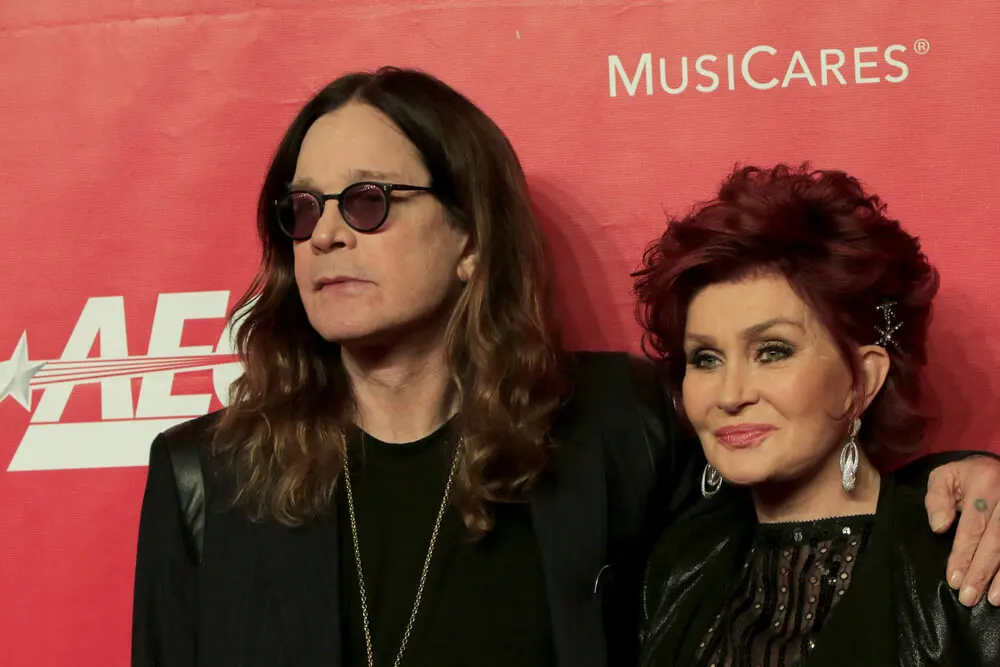3 Celebrities Diagnosed with Parkinson's Disease


Written and verified by the doctor Leonardo Biolatto
Many people have learned about Parkinson’s disease because they read in the news about celebrities suffering from it. Far from being a flashy showbiz event, the reporting of this reality can help more patients to detect the signs of the disorder early on. Find out about 3 celebrities diagnosed with Parkinson’s disease in this article.
Parkinson’s is chronic and degenerative. Once it starts, it’s prolonged over time and the symptoms get worse and worse.
At present, there is no cure. However, it’s also true that pharmacological science has advanced in recent years and the treatments available offer increasing hope.
What is Parkinson’s disease?
The types of Parkinson’s disease suffered by the celebrities we’re going to name aren’t always the same. Although they share the pathophysiological basis, we now know that there are different types of this disorder.
They all coincide in the decrease in the concentration of dopamine in the synaptic spaces. When this neurotransmitter reduces its presence in certain areas of the central nervous system, movements are affected.
Patients with Parkinson’s usually have the following symptoms:
- Tremors: Most commonly, these occur in the upper limbs. They start in one hand and migrate later to the other. But they tend to be asymmetrical.
- Stiffness: The classic posture of patients with Parkinson’s disease denotes muscle contractures that limit sitting and lying down. Stiffness leads to pain due to the forced malposition of the joints.
- Gait disturbance: The gait of a person with the disease is also classic. The feet drag against the ground and the knees bend very little. It isn’t uncommon for the gait to be slow at first and then to pick up speed, but to slow down again when there is a change of direction.
- Monotone voice: The patient’s speech is perceived as weak and nasal. There’s no variation in pitch.
- Poker face: The expression denotes rigidity of gestures. The gaze may be fixed, without much blinking.

Types of Parkinson’s
As already mentioned, not all celebrities or patients with Parkinson’s disease have the same variety of the disorder. Broadly speaking, the forms of presentation are as follows:
- Idiopathic: This is the most common. The average age of detection is around 60 years and, as its name suggests, no cause can be established.
- Early onset: This form of the illness is detected between 20 and 50 years of age. Symptoms tend to develop more slowly, but the quality of life deteriorates more noticeably, because the person is in a productive stage. There is also the added problem of early resistance to the effect of drugs and a higher frequency of adverse effects to the pharmacology used.
- Familial: This is a type linked to genetic problems and may represent up to 15% of all cases. A causal mutation is transmitted from generation to generation, which has also allowed the development of studies to identify these genes.
Find out more here: Ear Acupuncture Treatment for Parkinson’s
Some celebrities diagnosed with Parkinson’s disease
This small list of 3 celebrities diagnosed with Parkinson’s disease shows how this condition affects quality of life. Actors and singers have to modify their careers to adapt to the symptoms that affect them.
1. Michael J. Fox (in cover photo)
One of the most well-known cases of celebrities with Parkinson’s is that of this Back to the Future star. His early onset astonished everyone. Thus, the idea that this version of the younger onset disorder existed became known.
Currently, Fox is 61 years old. A little more than a year ago, he decided to quit acting completely to devote himself fully to a foundation he created in 2000.
The actor’s main purpose of this NGO is to find drugs that improve or reverse Parkinson’s disease. As he has said in recent statements, he understands that a cure may not be available for him, but may be in the future.
I try to be very direct with people who talk about my treatment. When they ask me if I think they will cure my Parkinson’s disease, I tell them, I’m over 60 years old now and science shows that it’s hard. So no.
In his words, he has turned down roles offered to him because he felt the speech disorders would keep him from acting well. Although that was after he made his diagnosis known to the public. He initially kept his condition hidden for 7 years out of fear.
Read more: Essential Tremor: Symptoms, Causes, and Treatments
2. Ozzy Osbourne
The famous heavy metal singer revealed to the public in 2020 that he had been diagnosed with a variant of Parkinson’s disease. After going through medical treatment and surgery for different reasons, some symptoms pointed to the fact that something wasn’t right.
In fact, in 2019, he canceled performances because he couldn’t cope with them. Little was known about his condition until he mentioned in a radio interview the conclusion that his doctors had reached.
According to what he said, they have detected a mutation in the PARK2 gene. Although it’s usually associated with the familial and juvenile version of the pathology, in Osbourne’s case it would be the cause of a partial syndrome.
The singer reports that some areas of his body are numb, weak, and in pain. Some days are good and he gets up in good spirits, but others bring him a lot of suffering. The ups and downs mean that he’s unable to schedule performances or appointments.
I have numbness in this arm, my legs get cold… I don’t know if that’s Parkinson’s or what, you know, but that’s the problem. I’ve never heard of nerve pain before and it’s a weird feeling.

3. Robin Williams
The case of Robin Williams is complex and denotes the diagnostic problems that Parkinson’s sometimes raises. In 2014, the actor took his own life at the age of 63 and everyone was perplexed.
As we now know from his wife’s statements, he had been diagnosed with Parkinson’s disease for 3 months. The actor was showing some unusual symptoms that complicated his daily life and the shooting of movies, as happened with the last installment of A Night at the Museum.
But after the suicide, the forensic autopsy changed the diagnosis. It seems that what he actually had was dementia with Lewy bodies.
This dementia consists of the accumulation of a protein inside neurons. The abnormal deposits hinder the functioning of certain brain areas linked to memory and movement.
It’s considered a progressive type of dementia. It has no cure and worsens over months.
We saw that Robin was suffering in a way he hadn’t before to remember lines and to combine the right words with the performance.
Celebrities diagnosed with Parkinson’s disease show the different facets of the disorder
Parkinson’s disease, in celebrities and non-celebrities, runs a devastating course. The alteration of quality of life is clear, and adaptation doesn’t always materialize.
For one thing, it’s a degenerative pathology with no cure. Symptoms can only be mitigated with medication and appropriate social and health support.
If you have symptoms related to your movement, you notice that words don’t flow as you would like, or you’re suffering from some memory loss, then don’t delay getting medical help. A specialized neurologist can guide you.
All cited sources were thoroughly reviewed by our team to ensure their quality, reliability, currency, and validity. The bibliography of this article was considered reliable and of academic or scientific accuracy.
- Sveinbjornsdottir, Sigurlaug. “The clinical symptoms of Parkinson’s disease.” Journal of neurochemistry 139 (2016): 318-324.
- Braak, Heiko, et al. “Idiopathic Parkinson’s disease: possible routes by which vulnerable neuronal types may be subject to neuroinvasion by an unknown pathogen.” Journal of neural transmission 110.5 (2003): 517-536.
- Pahwa, Rajesh, and Kelly E. Lyons. “Treatment of early Parkinson’s disease.” Current opinion in neurology 27.4 (2014): 442-449.
- Charvin, Delphine, et al. “Therapeutic strategies for Parkinson disease: beyond dopaminergic drugs.” Nature Reviews Drug Discovery 17.11 (2018): 804-822.
- Madsen, Daniel Aghaie, et al. “Interaction between Parkin and α-synuclein in PARK2-mediated Parkinson’s disease.” Cells 10.2 (2021): 283.
- Demey, Ignacio and R. Allegri. “Demencia en la enfermedad de Parkinson y demencia por cuerpos de Lewy.” Revista Neurológica Argentina 33.1 (2008): 3-21.
- Marín, Daniel S., et al. “Enfermedad de Parkinson: fisiopatología, diagnóstico y tratamiento.” Revista de La Universidad Industrial de Santander. Salud 50.1 (2018): 79-92.
- Armstrong, Melissa J., and Michael S. Okun. “Diagnosis and treatment of Parkinson disease: a review.” Jama 323.6 (2020): 548-560.
- Arredondo-Blanco, Kenia, et al. “Breve recorrido histórico de la enfermedad de Parkinson a 200 años de su descripción.” Gaceta medica de Mexico 154.6 (2018): 719-726.
This text is provided for informational purposes only and does not replace consultation with a professional. If in doubt, consult your specialist.








